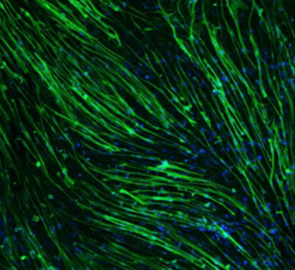
rPeptide是美国一家生物化学研发公司,主要产品涉及领域为老年性痴呆症与帕金森综合症研究使用的重组蛋白,重组多肽,抗体以及试剂等等,另外还提供一系列外包服务,从分子生物学,蛋白表达与蛋白纯化到13C与15N 统一标记蛋白与多肽。同时, rPeptide 技术平台可解决可溶性多肽/蛋白(例如:β-淀粉样蛋白、廋蛋白、前胰岛素)在大肠杆菌中表达等历史性难题。
以下是该公司部分代表产品:
Antibodies(抗体)

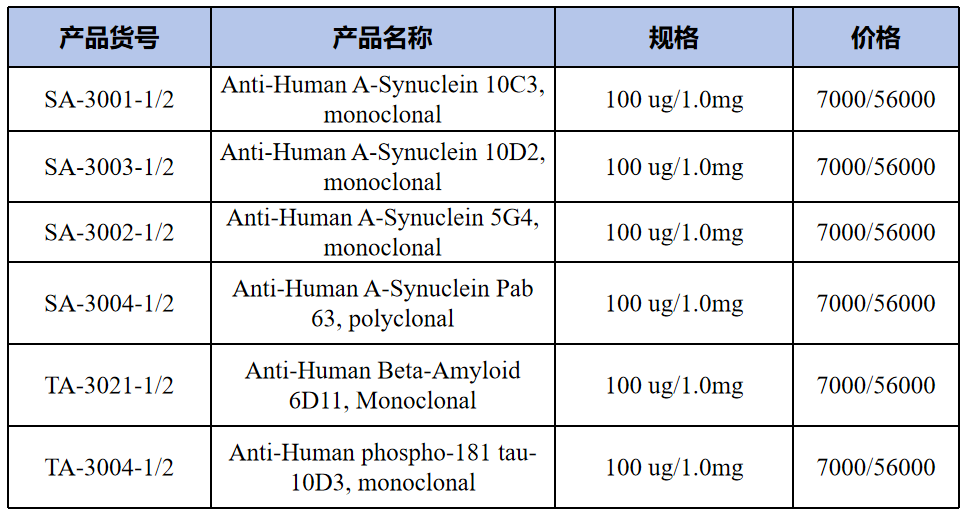
Peptides(多肽类)
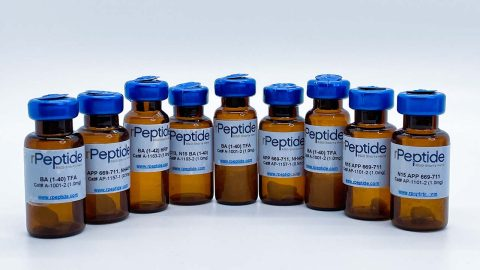

Proteins(蛋白质)
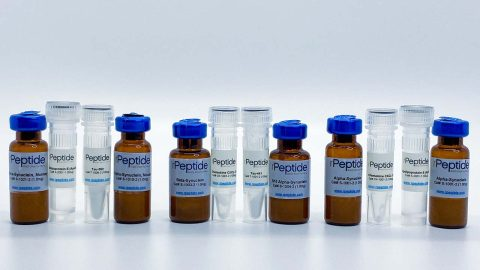
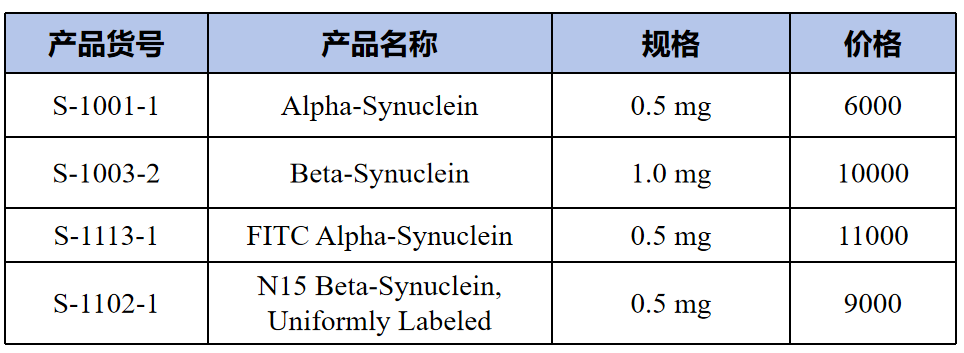
Neurodegenerative related compounds(神经退行性相关化合物)
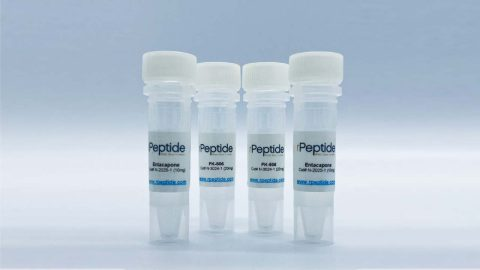
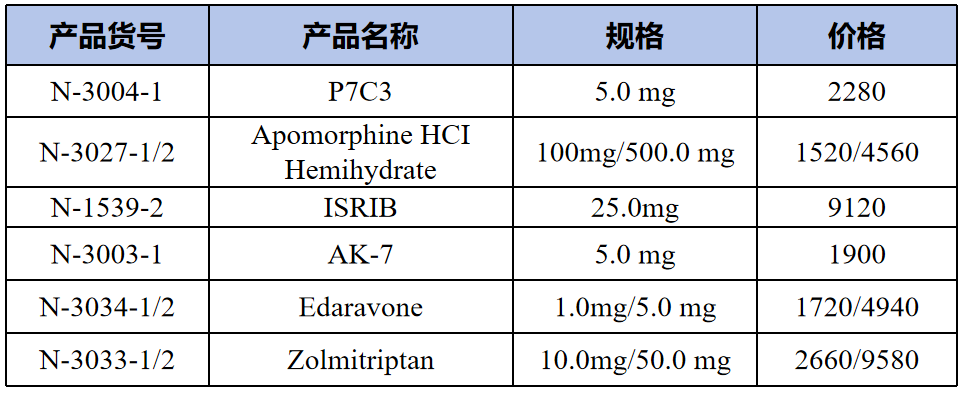
Coronavirus research tools(冠状病毒研究工具)

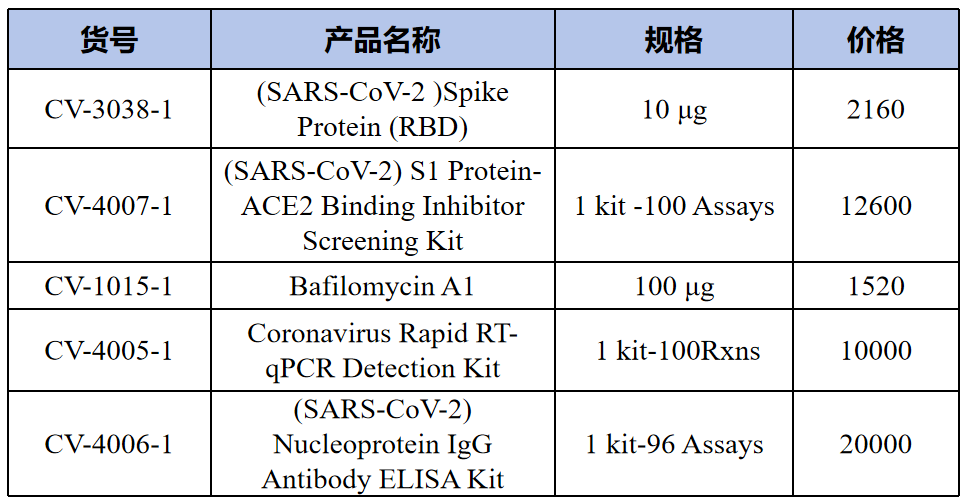
Kits(试剂盒)

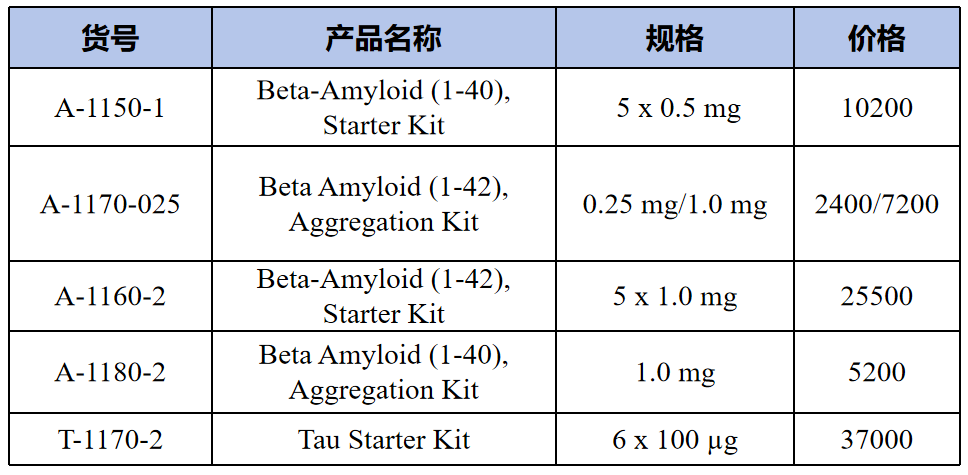
Preformed fibrils(预成型的纤维)


rPeptide 产品列表
Coronavirus Research Tools
| 货号 | 名称 | 规格 | 产品描述 |
| CV-3016-1 | Coronavirus Spike Protein (SARS-CoV S2) | 10 μg | SARS-CoV is an enveloped, single and positive-stranded RNA virus. Cell entry of severe acute respiratory syndrome coronavirus (SARSCoV) is mediated by the viral spike (S) protein. The spike (S) glycoprotein of coronaviruses is known to be essential in the binding of the virus to the host cell at the advent of the infection process. The spike protein is a large type I transmembrane protein containing two subunits, S1 and S2. For viral entry, the surface unit (S1) of SARS S binds to the cellular receptor angiotensin converting enzyme 2 (ACE2) and the transmembrane unit (S2) then fuses the viral membrane with a host cell membrane. The S protein plays key parts in the induction of neutralizing-antibody and T-cell responses, as well as protective immunity, during infection with SARS-CoV. Because the S protein of SARS-CoV is involved in receptor recognition, as well as virus attachment and entry, it represents one of the most important targets for the development of SARS vaccines and therapeutics. |
| CV-3016-2 | Coronavirus Spike Protein (SARS-CoV S2) | 50 μg | |
| CV-3036-1 | Coronavirus Spike Protein (SARS-CoV-2; S1), Recombinant | 10 μg | SARS-CoV is an enveloped, single and positive-stranded RNA virus. Cell entry of severe acute respiratory syndrome coronavirus (SARS-CoV) is mediated by the viral spike (S) protein. The spike (S) glycoprotein of coronaviruses is known to be essential in the binding of the virus to the host cell at the advent of the infection process. The spike protein is a large type I transmembrane protein containing two subunits, S1 and S2. For viral entry, the surface unit (S1) of SARS S binds to the cellular receptor angiotensin-converting enzyme 2 (ACE2) and the transmembrane unit (S2) then fuses the viral membrane with a host cell membrane. The S protein plays key parts in the induction of neutralizing-antibody and T-cell responses, as well as protective immunity, during infection with SARSCoV. Because the S protein of SARS-CoV is involved in receptor recognition, as well as virus attachment and entry, it represents one of the most important targets for the development of SARS vaccines and therapeutics. |
| CV-3037-1 | Coronavirus Spike Protein (SARS-CoV-2; S2), Recombinant | 10 μg | SARS-CoV is an enveloped, single and positive-stranded RNA virus. Cell entry of severe acute respiratory syndrome coronavirus (SARSCoV) is mediated by the viral spike (S) protein. The spike (S) glycoprotein of coronaviruses is known to be essential in the binding of the virus to the host cell at the advent of the infection process. The spike protein is a large type I transmembrane protein containing two subunits, S1 and S2. For viral entry, the surface unit (S1) of SARS S binds to the cellular receptor angiotensin-converting enzyme 2 (ACE2) and the transmembrane unit (S2) then fuses the viral membrane with a host cell membrane. The S protein plays key parts in the induction of neutralizing-antibody and T-cell responses, as well as protective immunity, during infection with SARS-CoV. Because the S protein of SARS-CoV is involved in receptor recognition, as well as virus attachment and entry, it represents one of the most important targets for the development of SARS vaccines and therapeutics. |
| CV-1011-1 | Dabrafenib (GSK2118436) | 5.0mg | Dabrafenib is a selective inhibitor of mutant B-RafV600E (IC50 = 0.8 nM), with 4- and 6-fold reduced potency against wild type B-Raf and c-Raf (IC50 = 3.2 and 5 nM, respectively).Has been in clinical trials in patients with B-RafV600E metastatic melanoma and other solid tumors. Endoplasmic reticulum stress and autophagy are induced in melanoma cells after treatment with dabrafenib and protect cells from dabrafenib toxicity. Induces epithelial differentiation in BRAF-mutant colorectal cancer cells. |
| CV-1011-2 | Dabrafenib (GSK2118436) | 25.0mg | |
| CV-1022-1 | Daunorubicin | 10.0 mg | Antitumor antibiotic used in the treatment of acute myeloid leukemias. Induces DNA damage by intercalation. Induces apoptosis in a variety of cell lines. Inhibition of autophagy with chloroquine enhances daunorubicin-induced apoptosis in K562 cells. Cell permeable. |
| CV-1022-2 | Daunorubicin | 50.0 mg | |
| CV-1040-1 | DTG | 100 mg | DTG is a high affinity agonist of the sigma (σ) receptor with roughly equal potency against both subtypes (σ1 and σ2 IC50’s ~ 30 nM). Induces heavy alcohol drinking in rats in a model of alcohol use disorder. Increases BDNF expression and attenuates ischemia/reperfusion-induced learning impairment in mouse models. |
| CV-1040-2 | DTG | 500 mg | DTG is a high affinity agonist of the sigma (σ) receptor with roughly equal potency against both subtypes (σ1 and σ2 IC50’s ~ 30 nM). Induces heavy alcohol drinking in rats in a model of alcohol use disorder. Increases BDNF expression and attenuates ischemia/reperfusion-induced learning impairment in mouse models. |
| CV-1012-1 | Entacapone | 10.0mg | Potent catechol O-methyltransferase (COMT) inhibitor (IC50 = 14.3, 20.1 and 73.3 nM for rat liver soluble COMT, total COMT and membrane-bound COMT respectively). Increases bioavailability of L-DOPA as adjunct therapy for Parkinson’s disease. Inhibits a- synuclein aggregation in vitro and inhibits a-synuclein-induced cell death in PC-12 cells. Antioxidant. Inhibits oxidative stress-induced cell death. |
| CV-1012-2 | Entacapone | 50.0mg | |
| CV-1003-1 | FK-506 | 10 mg | FK-506 induces immunosuppression by inhibiting T cell proliferation. Inhibits FKBP12 and calcineurin (IC50 ca. 1 nM). Reduces neuroinflammation and neurodegeneration in an a-synuclein-based rat model of Parkinson’s disease. Increases the rate of axonal regeneration following crush injury in a rat model. Cell permeable. |
| CV-1003-2 | FK-506 | 50 mg | |
| CV-1009-1 | GBR-12909 | 10.0mg | Potent and selective inhibitor of dopamine reuptake (Ki = 1 nM) with greater than 100 fold selectivity over serotonin and noradrenaline. Also acts as a potent sigma receptor ligand. Very fast acting via i.v. administration. |
| CV-1009-2 | GBR-12909 | 50.0mg | |
| CV-1018-1 | H89 | 5.0mg | Protein kinase A inhibitor, IC50=135 nM. Also inhibits several other kinases, IC50 = 80, 120, 270, 2600 and 2800 nM for S6K1, MSK1, ROCKII, PKBα and MAPKAP-K1b, respectively. A useful probe for PKA but due to selectivity issues, H-89 should be used along with other PKA inhibitors to ascertain the role of PKA in cellular signaling pathways. Has been used in a novel assay employing in vivo substrate screening. Cell permeable. |
| CV-1008-2 | Hydroxychloroquine sulfate | 250.0mg | |
| CV-1036-1 | I-BET762 | 5.0 mg | I-BET762 is a potent inhibitor of the BET family of bromodomains with no activity at bromodomains BAZ2B, SP140, ATAD2, CREBBO, and PCAF. IC50’s for H4Ac peptide displacement: BRD2=32.5 nM, BRD3=42.4nM, BRD4=36.1nM. It was able to suppress key inflammatory genes as well as the release of proinflammatory cytokines and prevent acute inflammation in mice. Suppresses the inflammatory function of T cells. Inhibition of BET bromodomains results in downregulation of Myc transcription, an important oncogene. |
| CV-1036-2 | I-BET762 | 25.0 mg | |
| CV-1027-1 | INK-128 (Sapanisertib) | 5.0 mg | A potent and selective, ATP-competitive inhibitor of mTOR kinase, Ki = 1.4 nM. Inhibits growth and proliferation of various breast cancer cell lines and human endothelial cells. |
| CV-1027-2 | INK-128 (Sapanisertib) | 25.0 mg | |
| CV-1007-1 | JQ1 | 5.0 mg | JQ1 is a potent BET bromodomain inhibitor. IC50 = 17.7, 32.6, 76.9 and 12942 nM respectively for BRD2 (N-terminal (N)), BRD4 (C-terminal (C)), BRD4 (N) and CREBBP respectively (data for + isomer). Competitive binding by JQ1 displaces the BRD4 fusion oncoprotein from chromatin, prompting squamous differentiation and specific antiproliferative effects in BRD4-dependent cell lines and patient-derived xenograft models. Induces squamous differentiation in NMC cell lines and inhibits tumor growth in NMC xenografts. Blocks inflammation and bone loss in periodontitis. Displays reversible contraceptive effects in male mice. Note this product is racemic (+/-) making the IC50 nominally 2 fold greater than literature values for the (+) isomer (offered as a lower cost option). |
| CV-1007-2 | JQ1 | 25 mg | |
| CV-1021-1 | Losartan potassium | 100 mg | Non-peptide angiotensin II receptor antagonist. Clinically useful antihypertensive agent. Inhibits collagen I synthesis. Induces SIRT1 expression and activity and reduces hepatic injury in a rat reduced-size orthotopic liver transplantation model. Displays neuroprotective effects along with nimesulide against chronic fatigue stress. Displays myocardial antifibrotic activity. |
| CV-1021-2 | Losartan potassium | 500 mg | |
| CV-1023-1 | Metformin | 5 g | Clinically useful antidiabetic agent. Lowers plasma glucose levels and improves insulin sensitivity. Inhibits hepatic gluconeogenesis by activation of the AMP-activated protein kinase (AMPK) pathway. Displays antiproliferative and pro-apoptotic actions in a variety of cancer cell lines. Induces autophagy via inhibition of the mTOR pathway. Activates PGC1a and improves mitochondrial dynamics in renal tubular cells. Upregulates SIRT1 activity in endothelial cells. Neuroprotective and lowers a-synuclein phosphorylation in the Parkinson’s disease MPTP mouse model. |
| CV-1023-2 | Metformin | 25 g | |
| CV-1006-1 | MLN4924 (Pevonedistat) | 1.0 mg | Potent and selective NEDD8-activating enzyme (NAE) inhibitor. It disrupts cullin-RING ligase-mediated protein turnover leading to apoptosis in human tumor cells. Suppresses the growth of human tumor xenografts in mice. Upregulates PD-L1 expression and enhances the efficacy of immune checkpoint blockade in glioblastoma. Modulates tumor microenvironment. Cell permeable |
| CV-1006-2 | MLN4924 (Pevonedistat) | 5.0 mg | |
| CV-1016-1 | Mycophenolic acid | 100 mg | Immunomodulator. Blocks the biosynthesis of guanine nucleotides via inhibition of inosine 5’-monophosphate dehydrogenase which suppresses the production of proinflammatory cytokines, nitric oxide and LDH in macrophages. Inhibits IL-2-dependent T cell proliferation. |
| CV-1016-2 | Mycophenolic acid | 500 mg | |
| CV-1029-1 | N4-Hydroxycytidine | 5.0 mg | N4-Hydroxycytidine was originally identified as a mutagen effecting AT to GC base-pair transitions. It has also been found to have antiviral properties against a broad range of viruses including hepatitis C, norovirus, Ebola virus, influenza and respiratory syncytial viruses and coronaviruses. Active molecule in the antiviral pro-drug clinical candidate EIDD-2801. |
| CV-1029-2 | N4-Hydroxycytidine | 25.0 mg | |
| CV-1001-1 | Na Valproate | 5 mg | Histone deacetylase inhibitor (IC50=400 µM). Demonstrates neuroprotective, anticancer and anti-inflammatory activity. Inhibits Aβ production, reduced neuritic plaque formation and improved memory deficits in Alzheimer’s mouse models. Improves stem cell reprogramming efficiency and enables efficient induction of pluripotency without introduction of the oncogene c-Myc. Clinically useful anticonvulsant. |
| CV-1002-1 | Nafamostat Mesylate | 10 mg | A potent and reversible serine protease inhibitor (IC50=0.3-54 uM). Selectively inhibits human tryptase (Ki = 95.3 pM) when employed at low concentrations. Dramatically suppresses pulmonary dysfunction in a rat model and inhibits airway eosinophilic inflammation. Anticoagulant, thrombin inhibitor which attenuates neuronal damage in a transient focal cerebral ischemia model. Also blocks TRPM7 in the absence of extracellular divalent cations. Cell permeable. |
| CV-1002-2 | Nafamostat Mesylate | 50 mg | |
| CV-1037-1 | NE-100 | 5.0 mg | NE-100 is potent inhibitor of the sigma receptor (σ) with selectivity for sigma-1 (IC50=1.5 nM) over sigma-2 (IC50=85 nM). NE-100 suppressed ischemia-induced neuronal cell death in mice via upregulation of GRP78 through the ATF6 pathway resulting in suppression of ER stress-induced cell death in a sigma-1-independent manner. |
| CV-1037-1 | NE-100 | 25.0 mg | |
| CV-1025-1 | Niclosamide | 1 g | Reversibly inhibits mTORC1 signaling and stimulates autophagy. Inhibits activation and nuclear translocation of STAT3 selectively over STAT1 and STAT5. Inhibits transcription of STAT3 target genes and induces cell cycle arrest and apoptosis in cells with constitutively active STAT3. Reverses radioresistance in human lung cancer cells and xenografts. |
| CV-1025-2 | Niclosamide | 5 g | |
| CV-1044-1 | Nitazoxanide | 10.0 mg | Nitazoxanide is a clinically useful antiparasitic agent. It has since been repurposed as a broad-spectrum antiviral agent that is active against many RNA and DNA viruses including influenza, hepatitis B and C, RSV, coronavirus, dengue and others. Its antiparasitic activity is believed to be due to inhibition of pyruvate:ferredoxin/flavodoxin oxidoreductases. Antiviral activity involves activation of protein kinase activated by double-stranded RNA (PKR) leading to phosphorylation of eukaryotic initiation factor 2 alpha (eIF2α). Nitazoxanide has also been found to inhibit Wnt signaling independent of adenomatous polyposis coli (APC), targeting peptidyl arginine deiminase 2 (PAD2) resulting in increased citrullination of β-catenin. |
| CV-1044-2 | Nitazoxanide | 50.0 mg | |
| CV-1004-1 | PKC-412 (Midostaurin) | 1.0 mg | Pan-specific kinase inhibitor. Selectively induces G1 arrest and apoptosis in Ba/F3 cells expressing mutant FLT3, IC50<10 nM. FLT3 ligand impedes the efficacy of inhibition by PKC-412. Potential therapeutic use in pancreatic cancer. Cell permeable. Active in vivo. |
| CV-1004-2 | PKC-412 (Midostaurin) | 5.0 mg | |
| CV-1039-1 | PRE084 | 5.0 mg | PRE-084 is an agonist of the σ receptor with selectivity for the σ1 subtype (IC50: σ1=2.2 nM, σ2=13091 nM). PRE-084 has demonstrated neuroprotective/restorative effects in brain injury, and neurodegenerative conditions. |
| CV-1039-2 | PRE084 | 25.0 mg | |
| CV-1030-1 | Pridopidine | 5.0 mg | Potential treatment for Huntington’s disease, Parkinson’s disease, and schizophrenia. Able to reverse both hypo- and hyperdopaminergia depending on local dopamine concentrations without inducing catalepsy. This was originally attributed to functional dopamine D2 antagonism with fast on/off kinetics (“dopamine stabilizer”). More recent studies have attributed pridopidine’s effects to its being a more potent sigma-1 ligand than a D2 ligand. Displays neuroprotective/restorative effects and ameliorates central features of amyotrophic lateral sclerosis pathology in a sigma-1-mediated manner. |
| CV-1030-2 | Pridopidine | 25.0 mg |
联系我们
相关推荐
评论列表共有 0 条评论
暂无评论
发表评论
取消回复
药科美专注生命科学产品进出口与技术服务





